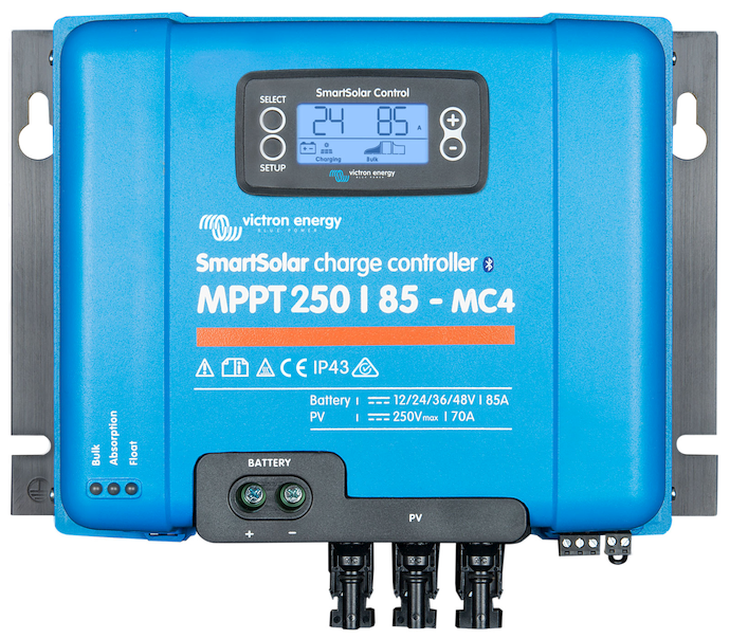How does the cost of MPPT compare with direct connection of turbine to battery?

Our PLT/TRG 28 or 56 turbine options can be connected directly to your (24V or 48V) battery, but we almost always recommend that clients use a PLT/TRG 40 or 80 instead, with MPPT controller so as to optimise turbine speed and maximise power. MPPT controllers can however be damaged by overvoltage. Turbine voltage can rise to 3 times normal when unloaded, so the PLT/TRG80 either needs a 250V MPPT controller, or a PowerClamp (protecting a 150V controller by keeping the turbine on load). In most cases you also need a diversion load controller at the battery. This is to control battery voltage and turbine speed, and also to harvest surplus power for water heating. We recommend using a Tristar PWM controller (in diversion mode) or a Solid State Relay (SSR) operated by an auxiliary output port on the MPPT controller.
The extra cost of using MPPT is much less than you may think. See tables below, with MPPT & Tristar prices taken from sellers on eBay. In the case of direct connection we list two diversion controllers, following NEC code for safety. Failure of a single PWM controller on a direct turbine input can cause your battery to explode.
48V battery

The above is for up to 1200W turbine on a 48v battery. All the above will still work fine for a 1600W HP turbine and with upgrades to SSR and dump loads some MPPT options can work up to 3.5kW for stacked PowerSpout turbines.
24V battery

The above is for up to 1200W turbine on a 24v battery. Some of the MPPT options can go up to 2.4kW at 24V for stacked PowerSpout turbines.
Advantages of MPPT
In general an 80V MPPT system will save on cable costs due to higher transmission voltage, and because MPPT regulators automatically track maximum power for you, you will normally generate more power than a direct system with PWM regulation.
AC coupling
If you are off-grid with a bi-directional inverter (that can use AC power from its output terminals to charge the battery) then you can also connect via a Grid tie inverter or "GTI". This always includes a MPPT function, at a higher voltage than common charge controllers, and can often avoid the need for a PowerClamp. The Solis-mini/GCI-mini range of GTI’s has proved to work very well in both Europe and the USA. The cost of a PLT200 connected via a GTI will be in a similar price range to those indicated above. The main cost above is still the turbine, but this is normally less than the intake and penstock cost, the new PLT-Cube will half the cost of the PLT turbine in some markets.


